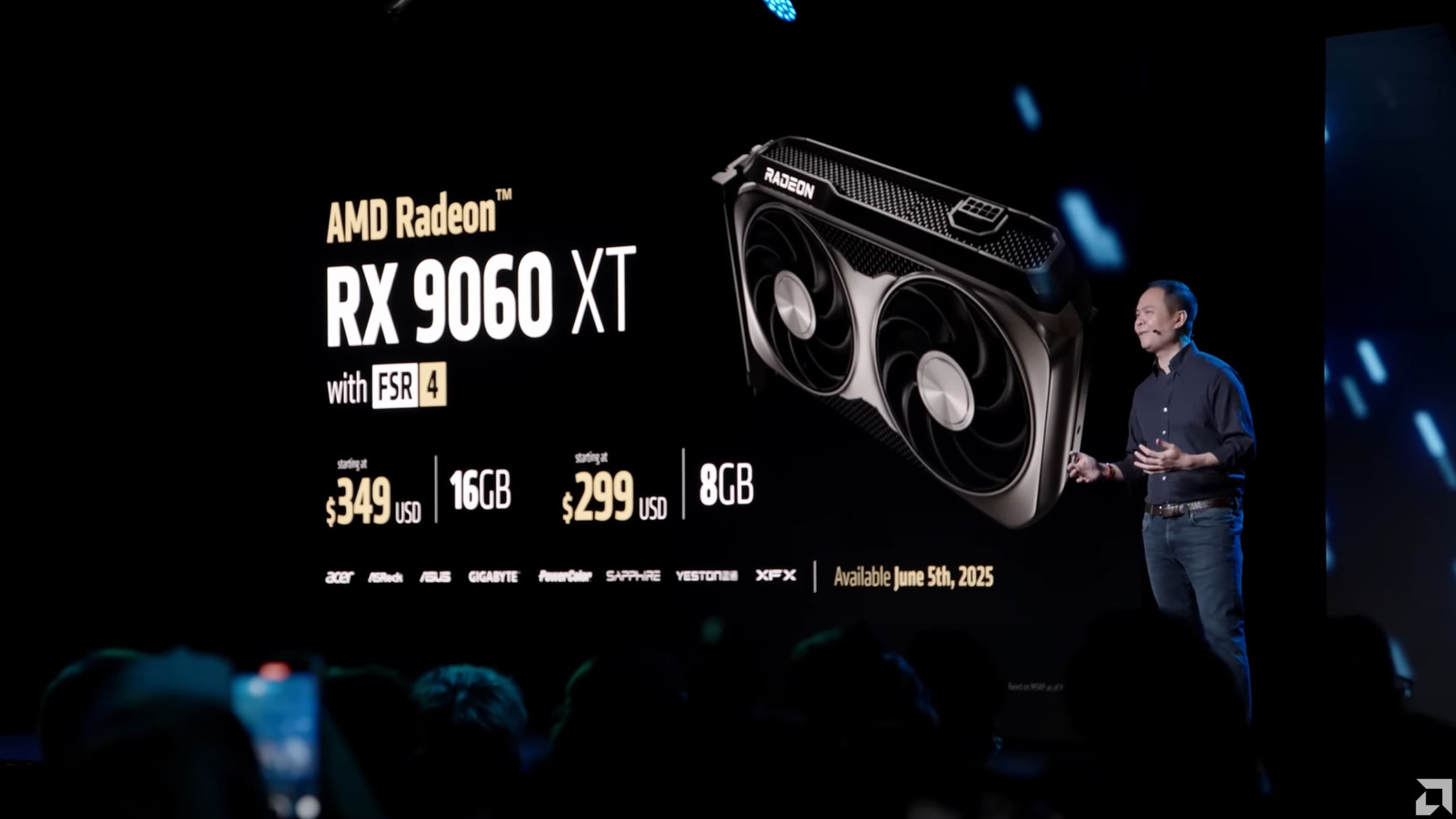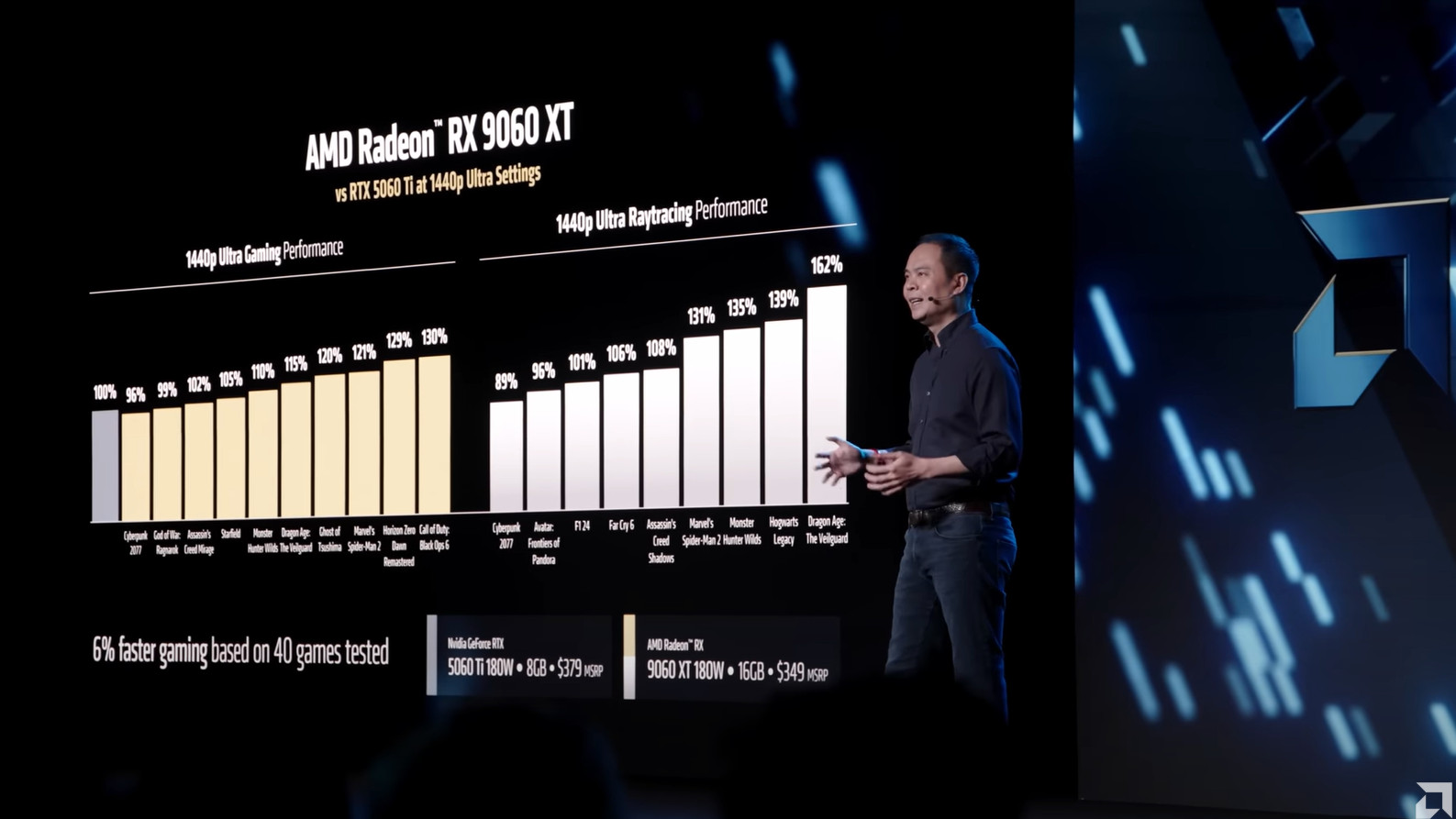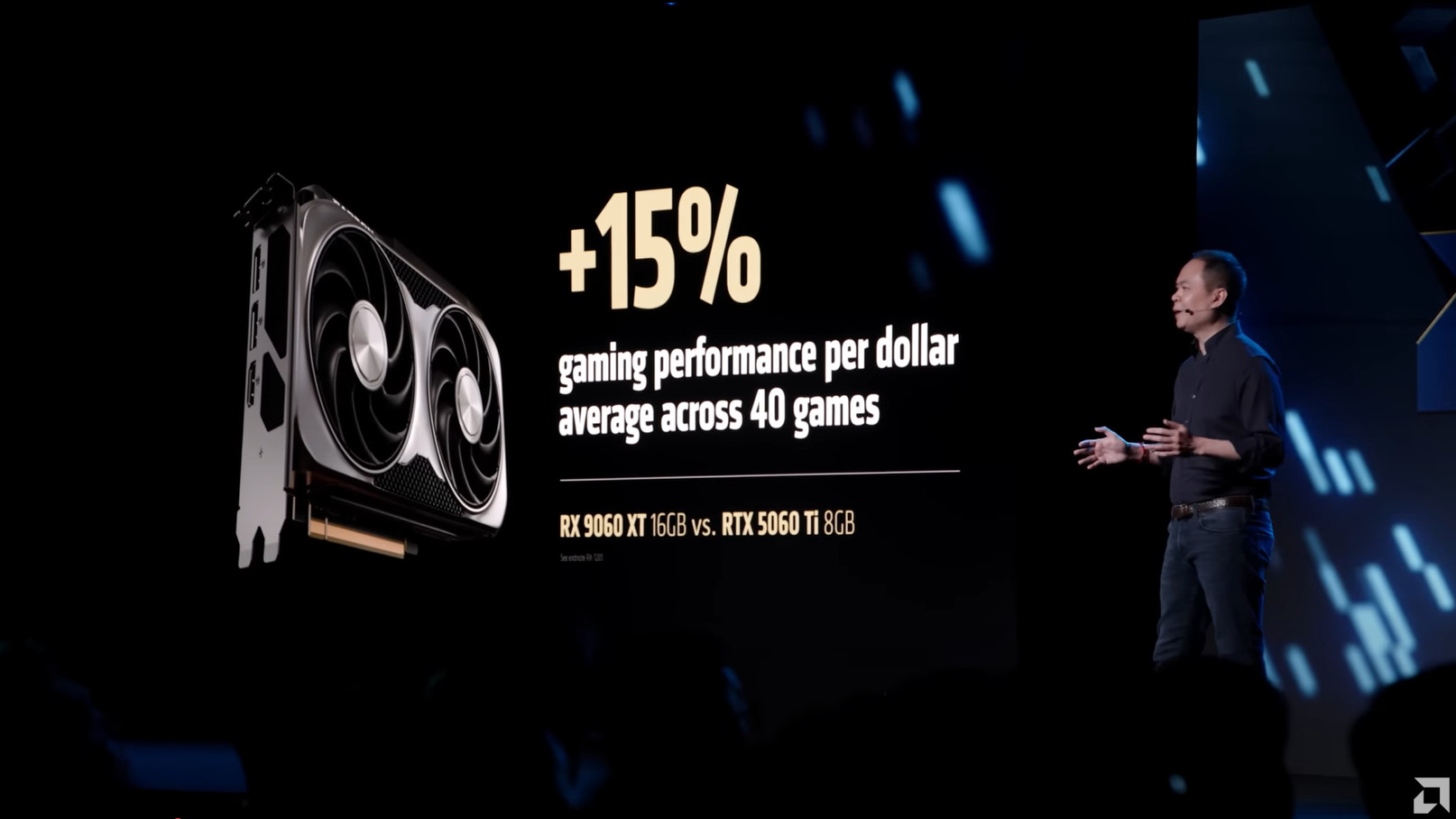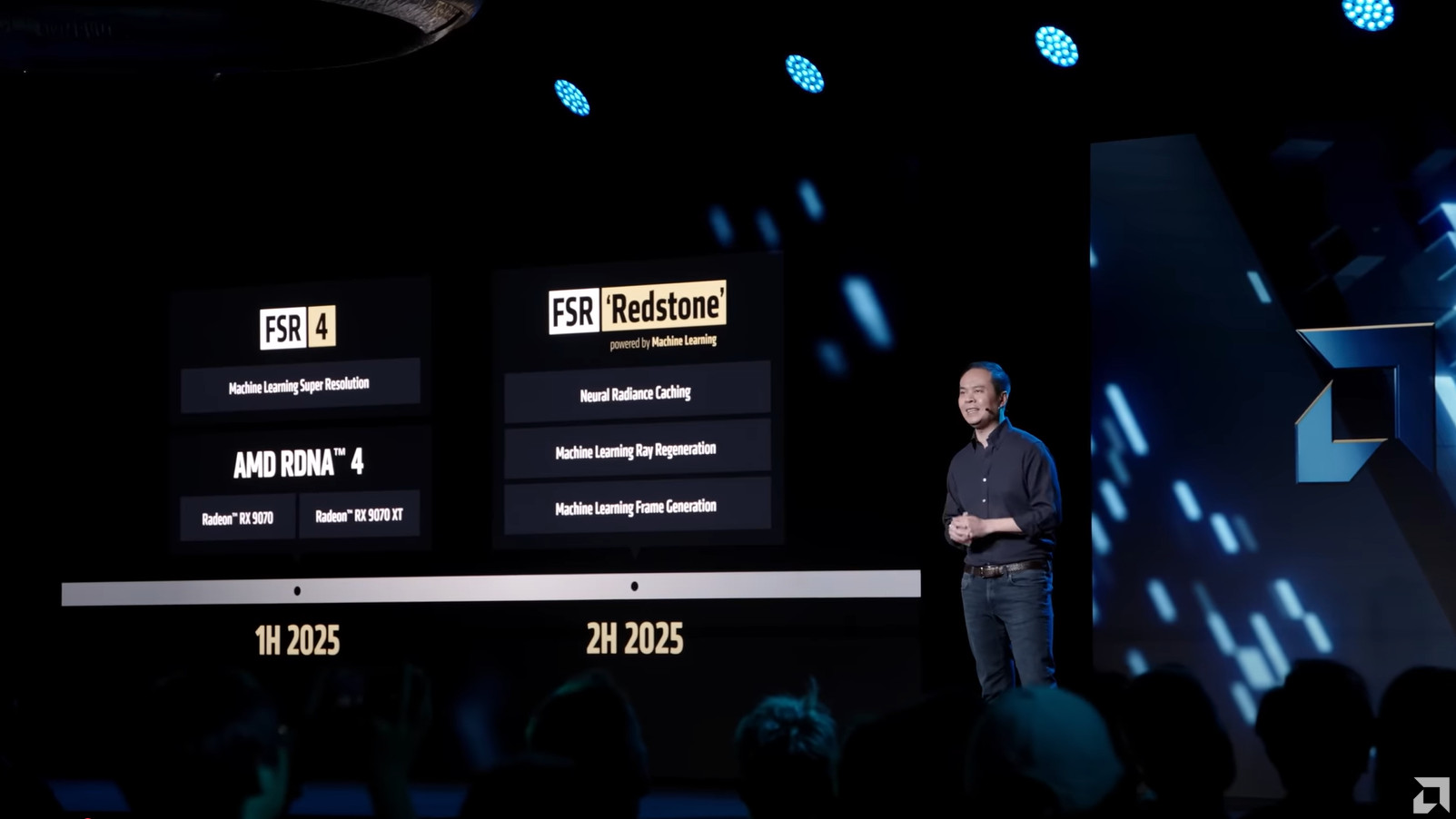AMD swept its new 8GB RX 9060 XT GPU under the rug at Computex, and it's not getting the same heat as NVIDIA
AMD unveiled its new RX 9060 XT GPU at Computex, and it comes in 8GB and 16GB models. Here we go again.
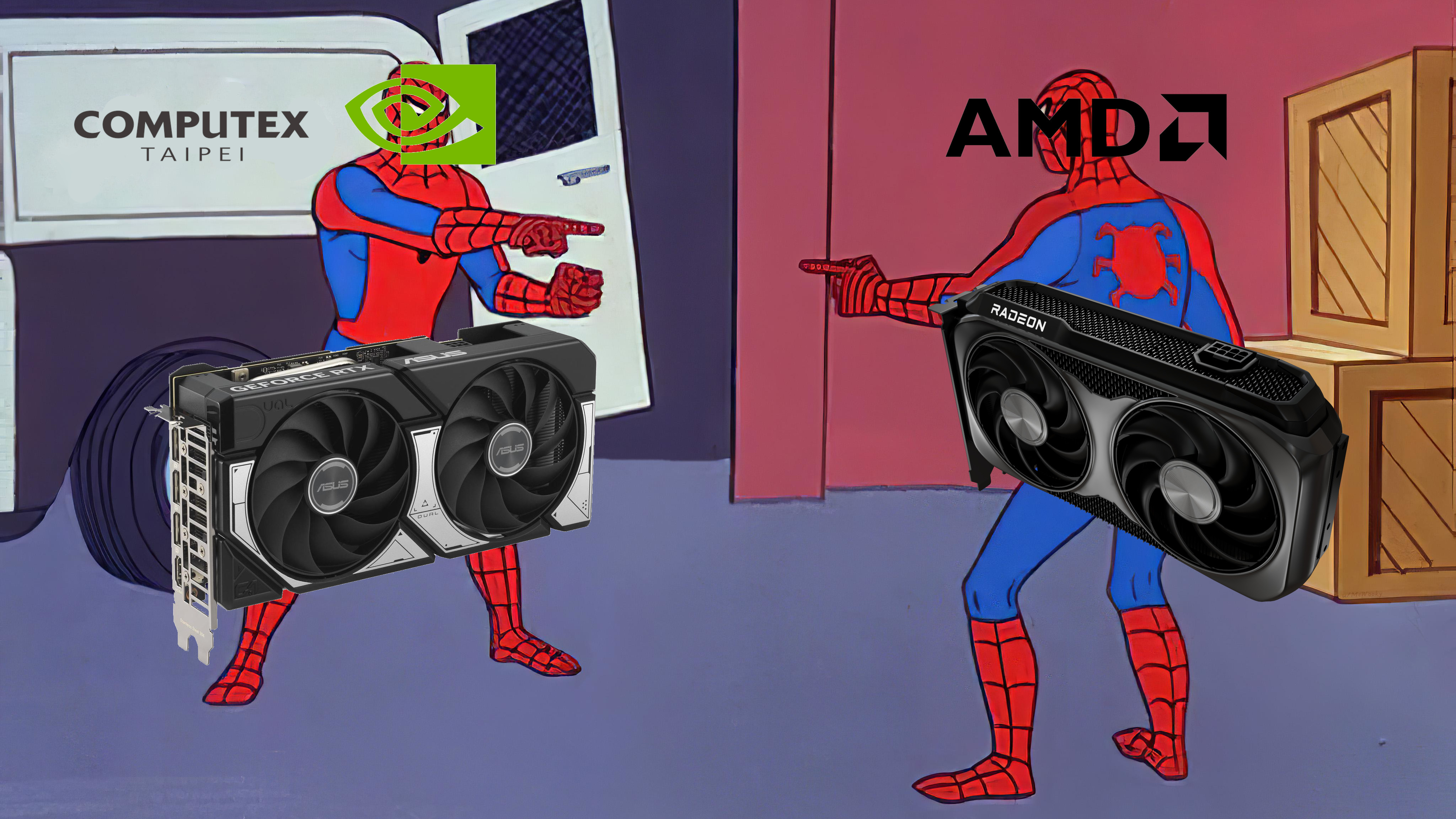
AMD's Radeon RX 9060 XT graphics cards are official after weeks of rumors, set to arrive on June 5 with 8GB and 16GB VRAM versions. The news comes out of Computex 2025, which is currently underway in Taipei, Taiwan.
The 8GB RX 9060 XT is expected to launch at a $299 MSRP, while the 16GB version should launch at $349. AMD is calling the 16GB version "the world's best graphics cards under $350."
Of course, MSRP doesn't mean much these days, so it'll be interesting to see the prices that board partners come up with. AMD does not plan to release a reference card of its own.
The Radeon RX 9060 XT joins its more powerful RX 9070 XT and RX 9070 siblings, which launched on March 6 with $599 and $549 MSRPs, respectively.
Here's a look at the RX 5060 XT's raw specs as shared by AMD in its presentation.
Spec | AMD Radeon RX 9060 XT | AMD Radeon RX 9070 XT | AMD Radeon RX 9070 | NVIDIA RTX 5060 Ti |
|---|---|---|---|---|
RDNA 4 Compute units | 32 | 64 | 56 | N/A |
RT cores/accelerators | 32 | 64 | 56 | 36 |
AI cores/accelerators | 64 | 128 | 112 | 144 |
VRAM | 8GB | 16GB GDDR6 | 16GB GDDR6 | 16GB GDDR6 | 8GB | 16GB GDDR7 |
Memory bus | 128-bit | 256-bit | 256-bit | 128-bit |
Boost clock | 3.13GHz | 2.97GHz | 2.52GHz | 2.57GHz |
Typical board power | 150W (8GB) | 182W (16GB) | 304W | 220W | 180W |
Connectivity | PCIe 5.0 x16 | PCIe 5.0 x16 | PCIe 5.0 x16 | PCIe 5.0 x8 |
AI TOPS (Int4) | 821 | 1,557 | 1,165 | TBD |
Launch MSRP | $299 (8GB) | $349 (16GB | $599 | $549 | $379 (8GB) | $429 (16GB) |
AMD buried the 8GB RX 9060 XT at its Computex presentation
There are a few things that don't sit right with me regarding AMD's Computex presentation.
Taking a page out of NVIDIA's recent playbook, AMD completely glossed over the RX 9060 XT with 8GB of VRAM.
All the latest news, reviews, and guides for Windows and Xbox diehards.
It used to be a misstep to launch the same card with different amounts of VRAM. Now it's normal, and consumers are paying the price due to the extra confusion created by the naming schemes.
You can watch AMD's presentation in the embedded video above; you won't see any discussion about the lesser card. The only time I saw it was for a brief moment on a slide displaying the price, availability, and board partners.
What's worse, AMD's performance comparisons all use the 16GB RX 9060 XT, but it's placed up against the 8GB RTX 5060 Ti.
I understand that AMD is focusing on pricing, and the 9060 XT 16GB at $349 compares better to the RTX 5060 TI 8GB at $379. For reference, the 5060 Ti 16GB launched at $429.
Considering how hard it currently is to find AMD's RDNA 4 GPUs at MSRP, it's difficult to take the comparisons seriously. Putting a 16GB card up against an 8GB card at 1440p Ultra and Ultra Raytracing settings has predictable results.
The card with more VRAM can better handle the higher resolutions and cranked in-game settings, and AMD's claim of 6% faster gaming in 40 games under those conditions isn't exactly blowing me away.
Claiming to offer an extra 15% gaming performance per dollar compared to the 8GB RTX 5060 Ti is the more impressive slide, yet again, I'll wait to see what prices look like on June 5 when the 9060 XT launches.
A direct comparison between AMD and NVIDIA's 8GB and 16GB cards would have been a lot better, but I suspect those numbers don't favor AMD as much.
Where's the backlash for AMD's 8GB RX 9060 XT?
It's only been a few hours since AMD announced its RX 9060 XT, but I'm not seeing much backlash from publications and consumers around the model with 8GB of VRAM.
NVIDIA has been getting roasted for its decision to launch 8GB and 16GB VRAM versions of its RTX 5060 Ti, and for good reason.
8GB of VRAM is simply not enough in 2025, when games are launching with incredibly detailed textures and always-on ray tracing.
I've been covering NVIDIA's troubles since the RTX 50-series was announced, and AMD had a great opportunity to put NVIDIA's mid-range cards to rest.
Instead, it's pulling the same tricks by hiding the 8GB model and launching two GPUs under the same name. I'm disappointed, AMD.
I expect some of the backlash will pick up when it comes to review time, but it's unclear if AMD even plans on offering the 8GB model for testing.
AMD announces Redstone as an upgrade to FSR
The new Radeon RX 9060 XT wasn't the only announcement from AMD at Computex 2025.
Alongside new Ryzen Threadripper PRO 9000 and 9000 WX-series CPUs, a Radeon AI PRO R9700 GPU for high-performance workstations, and ASUS Expert P Series Copilot+ PCs with Ryzen AI 300 chips, AMD unveiled an evolution for FidelityFX Super Resolution (FSR).
"Redstone" is an upgrade to FSR 4's Super Resolution and Frame Generation. Like FSR 4, it's powered by machine learning and aims to improve visual fidelity while lowering the raw horsepower required from your GPU.
It's expected to arrive in the second half of 2025 for RDNA 4 GPUs; no word about older cards picking up support.
As AMD explains it, Redstone focuses on adding or improving Neural Radiance Caching, Machine Learning Ray Regeneration, and Machine Learning Frame Generation.
This pulls FSR closer to what NVIDIA offers with DLSS, but it remains to be seen how well it'll compare.

Cale Hunt brings to Windows Central more than nine years of experience writing about laptops, PCs, accessories, games, and beyond. If it runs Windows or in some way complements the hardware, there’s a good chance he knows about it, has written about it, or is already busy testing it.
You must confirm your public display name before commenting
Please logout and then login again, you will then be prompted to enter your display name.

